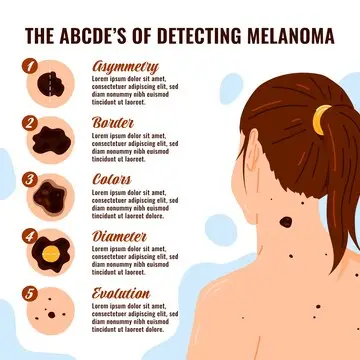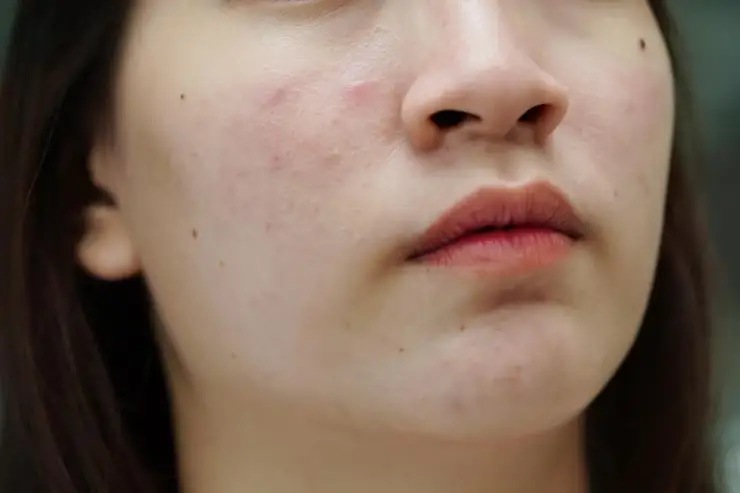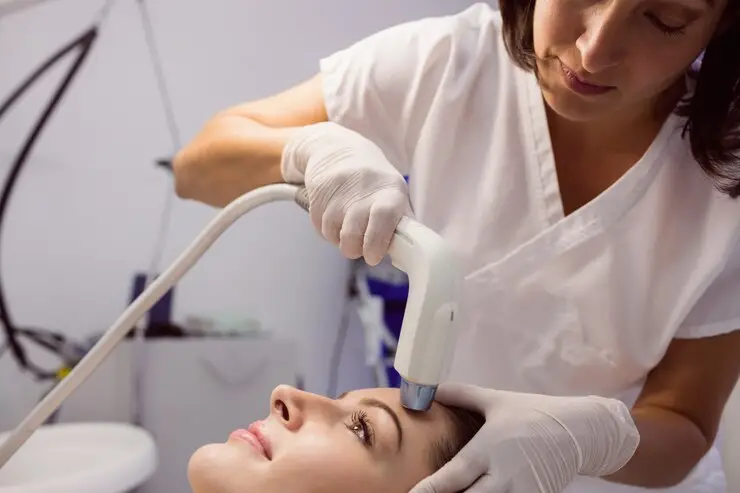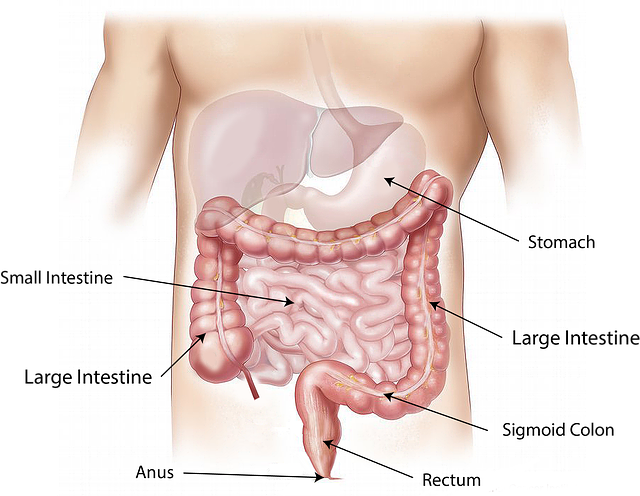Exploring Dermatology on Understanding the Minor Skin Health and Disease


Dermatology, a multifaceted medical specialty, focuses on diagnosing and treating disorders of the skin, hair, nails, and mucous membranes. As the body’s largest organ, the skin plays a pivotal role in protection, sensation, and thermoregulation. Dermatologists are adept at addressing a wide spectrum of conditions, ranging from common skin ailments like acne to complex diseases such as melanoma. Here, we delve into the realm of dermatology, highlighting its breadth, significance, and therapeutic approaches.

Page Contents
Exploring Dermatology on Understanding the Minor Skin Health and Disease

Cause
The causes of common skin conditions can vary widely depending on the specific condition. Here’s a breakdown of the potential causes for each of the skin conditions mentioned:
- Acne:
- Hormonal changes, particularly during puberty.
- Excessive oil production (sebum) by the sebaceous glands.
- Clogged hair follicles due to dead skin cells and bacteria.
- Eczema (Dermatitis):
- Genetic factors that affect the skin’s ability to retain moisture.
- Environmental factors such as allergens, irritants, and climate.
- Dysfunction of the skin barrier, allowing allergens and irritants to penetrate the skin.
- Psoriasis:
- Genetic predisposition (family history of psoriasis).
- Immune system dysfunction, leading to inflammation and rapid skin cell turnover.
- Triggers such as stress, infections, injuries, or certain medications.
- Rosacea:
- Abnormalities in facial blood vessels.
- Genetic predisposition.
- Triggers such as sun exposure, hot or spicy foods, alcohol, stress, and certain medications.
- Atopic Dermatitis:
- Genetic factors (mutations in genes related to skin barrier function and immune response).
- Environmental factors such as allergens, irritants, and climate.
- Immune system dysregulation.
- Contact Dermatitis:
- Direct contact with irritants (e.g., soaps, detergents, chemicals) or allergens (e.g., nickel, latex).
- Sensitivity or allergic reaction to certain substances.
- Fungal Infections:
- Fungal overgrowth due to warm, moist environments.
- Direct contact with fungal spores (e.g., athlete’s foot fungus).
- Weakened immune system.
- Skin Cancer:
- Exposure to ultraviolet (UV) radiation from the sun or tanning beds.
- Genetic predisposition.
- Environmental factors such as exposure to certain chemicals or radiation.
- Hives (Urticaria):
- Allergic reactions to foods, medications, insect bites, or other allergens.
- Non-allergic triggers such as stress, heat, or pressure on the skin.
- Seborrheic Dermatitis:
- Overgrowth of yeast (Malassezia) on the skin.
- Genetic factors.
- Hormonal changes.
- Environmental factors such as cold weather or stress.
Understanding the underlying causes of these skin conditions is important for prevention and effective treatment. It’s advisable to consult a dermatologist for proper diagnosis and management tailored to individual needs.
Table 1- Description
| Aspect | Description |
|---|---|
| Scope of Dermatology | Dermatology encompasses a diverse array of conditions affecting the skin, hair, nails, and mucous membranes. These include acne, eczema, psoriasis, skin cancer, dermatitis, alopecia, and fungal infections. |
| Importance | Skin health is paramount for overall well-being, impacting physical comfort, self-esteem, and social interaction. Dermatologists play a crucial role in promoting skin health, diagnosing disorders, and improving quality of life. |
| Common Conditions | Common dermatological conditions include: <br> – Acne: Pimples, blackheads, and whiteheads caused by inflammation of hair follicles. <br> – Eczema (Atopic Dermatitis): Chronic inflammatory skin condition causing dry, itchy, inflamed skin. |
| – Psoriasis: Chronic autoimmune disorder characterized by rapid overproduction of skin cells, leading to thick, scaly patches. <br> – Skin Cancer: Abnormal growth of skin cells, including melanoma, basal cell carcinoma, and squamous cell carcinoma. | |
| – Dermatitis: Inflammation of the skin, triggered by contact with irritants or allergens. <br> – Alopecia: Hair loss from the scalp or body, with various underlying causes. <br> – Fungal Infections: Infections caused by fungi, such as athlete’s foot, ringworm, and fungal nail infections. | |
| Advancements | Advancements in dermatology have revolutionized treatment approaches, including: <br> – Biologic agents for psoriasis. <br> – Targeted therapies for melanoma. <br> – Laser therapy and photodynamic therapy for various dermatological concerns. |
| Ongoing research continues to uncover new insights into skin diseases, identify biomarkers for early detection, and develop innovative therapeutic strategies. |
1o Different Common Skin Conditions Symptoms
Dermatology, the branch of medicine dealing with the skin, encompasses a wide array of common conditions. Here are some of the most prevalent ones:
- Acne: A common skin condition characterized by pimples, blackheads, and whiteheads. It often occurs during puberty due to hormonal changes but can affect people of all ages.
- Eczema (Dermatitis): Eczema is a group of conditions that cause inflammation of the skin, resulting in redness, itching, and sometimes blistering. It can be triggered by allergies, irritants, or genetics.
- Psoriasis: Psoriasis is a chronic autoimmune condition that causes the rapid buildup of skin cells, leading to thick, silvery scales and itchy, dry patches. It often affects the elbows, knees, scalp, and lower back.
- Rosacea: Rosacea is a chronic skin condition that primarily affects the face, causing redness, visible blood vessels, and in some cases, bumps that resemble acne. It may also cause burning or stinging sensations.
- Atopic Dermatitis: A type of eczema commonly seen in infants and children, atopic dermatitis causes dry, itchy skin and often occurs in individuals with a family history of allergies or asthma.
- Contact Dermatitis: Contact dermatitis occurs when the skin comes into contact with an irritant or allergen, leading to redness, itching, and sometimes blistering. Common irritants include soaps, cosmetics, and certain metals.
- Fungal Infections: Fungal infections such as ringworm, athlete’s foot, and yeast infections can affect the skin, nails, and hair, causing itching, redness, and sometimes blisters or scaling.
- Skin Cancer: Skin cancer, including melanoma, basal cell carcinoma, and squamous cell carcinoma, is often caused by exposure to ultraviolet (UV) radiation from the sun or tanning beds. Early detection and treatment are crucial for favorable outcomes.
- Hives (Urticaria): Hives are raised, itchy welts that appear on the skin due to an allergic reaction or other triggers such as stress, heat, or exercise. They can vary in size and may come and go rapidly.
- Seborrheic Dermatitis: Seborrheic dermatitis is a common skin condition that causes redness, scaling, and dandruff, particularly in areas rich in oil glands such as the scalp, face, and chest.
These are just a few examples of common skin conditions seen in dermatology. It’s important to consult a dermatologist for proper diagnosis and treatment if you experience any persistent or concerning skin issues.

Treatment
The treatments for common skin conditions can vary depending on the severity of the condition, the individual’s medical history, and other factors. Here’s an overview of treatments for each of the 10 skin conditions mentioned:
- Acne:
- Over-the-counter topical treatments containing benzoyl peroxide, salicylic acid, or retinoids.
- Prescription medications such as topical or oral antibiotics, oral contraceptives (for hormonal acne in women), or isotretinoin for severe cases.
- Procedures like chemical peels, laser therapy, or extraction of comedones by a dermatologist.
- Eczema (Dermatitis):
- Moisturizers to hydrate the skin and prevent dryness.
- Topical corticosteroids to reduce inflammation and itching during flare-ups.
- Antihistamines to relieve itching.
- Avoiding triggers such as certain foods, harsh soaps, and allergens.
- Prescription medications like calcineurin inhibitors (e.g., tacrolimus, pimecrolimus) for moderate to severe cases.
- Psoriasis:
- Topical treatments like corticosteroids, vitamin D analogs, and retinoids.
- Phototherapy (light therapy) using UVB light.
- Systemic medications such as methotrexate, cyclosporine, or biologics for severe cases.
- Oral retinoids for certain types of psoriasis.
- Topical coal tar preparations.
- Rosacea:
- Topical treatments like metronidazole, azelaic acid, or brimonidine to reduce redness and inflammation.
- Oral antibiotics such as doxycycline or minocycline to control inflammation and reduce papules and pustules.
- Laser therapy or intense pulsed light (IPL) to reduce visible blood vessels and redness.
- Atopic Dermatitis:
- Moisturizers to keep the skin hydrated.
- Topical corticosteroids to reduce inflammation during flare-ups.
- Topical calcineurin inhibitors for areas of thin skin or on the face.
- Antihistamines to relieve itching.
- Avoiding triggers such as certain fabrics, harsh soaps, and allergens.
- Contact Dermatitis:
- Avoiding the irritant or allergen causing the reaction.
- Topical corticosteroids to reduce inflammation and itching.
- Oral antihistamines to relieve itching.
- Cool compresses to soothe the affected area.
- Fungal Infections:
- Antifungal medications, such as creams, ointments, or oral medications, depending on the severity and location of the infection.
- Keeping the affected area clean and dry.
- Avoiding sharing personal items like towels or clothing.
- Skin Cancer:
- Surgical removal of the cancerous tissue (excision).
- Mohs surgery for certain types of skin cancer to ensure complete removal while preserving healthy tissue.
- Radiation therapy.
- Chemotherapy or targeted therapy for advanced cases.
- Hives (Urticaria):
- Antihistamines to relieve itching and reduce the severity of hives.
- Avoiding triggers such as certain foods, medications, or environmental factors.
- Corticosteroids for severe or persistent hives.
- Seborrheic Dermatitis:
- Medicated shampoos containing ingredients like ketoconazole, selenium sulfide, or zinc pyrithione.
- Topical corticosteroids or antifungal creams for stubborn patches.
- Avoiding harsh soaps and skincare products that can exacerbate symptoms.
It’s important for individuals with these conditions to work closely with a dermatologist to develop a personalized treatment plan that addresses their specific needs and concerns.
Duration of Treatment
The duration of treatment for common skin conditions can vary significantly depending on several factors, including the severity of the condition, the individual’s response to treatment, and the specific treatment modalities used. Here’s a general overview of the treatment durations for the mentioned skin conditions:
- Acne:
- Treatment duration can range from several weeks to several months.
- Mild cases may respond to over-the-counter treatments within a few weeks, while severe or persistent acne may require months of prescription medications or procedures.
- Maintenance therapy may be needed to prevent recurrence.
- Eczema (Dermatitis):
- Eczema is often a chronic condition with periods of flare-ups and remission.
- Treatment may involve ongoing management with moisturizers and avoidance of triggers.
- Topical corticosteroids and other medications may be used during flare-ups, with treatment duration varying based on the severity of symptoms.
- Psoriasis:
- Treatment duration depends on the type and severity of psoriasis.
- Mild cases may respond to topical treatments within a few weeks, while more severe cases may require ongoing or intermittent use of medications, phototherapy, or systemic treatments.
- Maintenance therapy may be necessary to manage symptoms and prevent flare-ups.
- Rosacea:
- Treatment duration varies depending on the individual’s response to therapy and the severity of symptoms.
- Topical medications may be used long-term to manage symptoms, while oral medications like antibiotics may be used for shorter durations during flare-ups.
- Lifestyle modifications and avoidance of triggers may be necessary for ongoing management.
- Atopic Dermatitis:
- Treatment duration can be prolonged, as atopic dermatitis is often a chronic condition.
- Management involves ongoing skin care, avoidance of triggers, and regular use of moisturizers.
- Topical corticosteroids and other medications may be used during flare-ups, with treatment duration varying based on the severity of symptoms.
- Contact Dermatitis:
- Treatment duration depends on the type and severity of the reaction.
- Avoidance of the offending substance is crucial for resolution.
- Topical corticosteroids and other medications may be used to alleviate symptoms during flare-ups, with treatment duration varying based on the individual’s response.
- Fungal Infections:
- Treatment duration varies depending on the type and location of the fungal infection.
- Superficial infections like athlete’s foot or ringworm may resolve within a few weeks with topical antifungal medications.
- More severe or widespread infections may require oral antifungal medications and may take longer to resolve.
- Skin Cancer:
- Treatment duration depends on the type and stage of skin cancer.
- Surgical removal or other treatments may be performed as a one-time procedure or may require multiple sessions.
- Follow-up care and monitoring are important for detecting recurrence or new lesions.
- Hives (Urticaria):
- Acute hives may resolve within a few hours to a few days, especially with the use of antihistamines.
- Chronic hives may require ongoing treatment and management, with treatment duration varying based on the underlying cause and individual response.
- Seborrheic Dermatitis:
- Treatment duration can vary depending on the severity of symptoms and individual response to therapy.
- Medicated shampoos and topical treatments may be used regularly for ongoing management.
- Periodic flare-ups may require short-term use of topical medications.
In summary, the duration of treatment for common skin conditions can range from short-term to long-term, depending on various factors. It’s essential to follow the treatment plan recommended by a healthcare professional and to attend regular follow-up appointments for optimal management of these conditions.
Conclusion:
Dermatology stands at the forefront of healthcare, addressing the intricate complexities of skin health and disease. Through diligent research, innovative therapies, and personalized care, dermatologists strive to enhance patient outcomes and foster a deeper understanding of dermatological conditions. As advancements in the field continue to unfold, dermatology remains steadfast in its commitment to promoting skin health and improving the lives of individuals worldwide.






